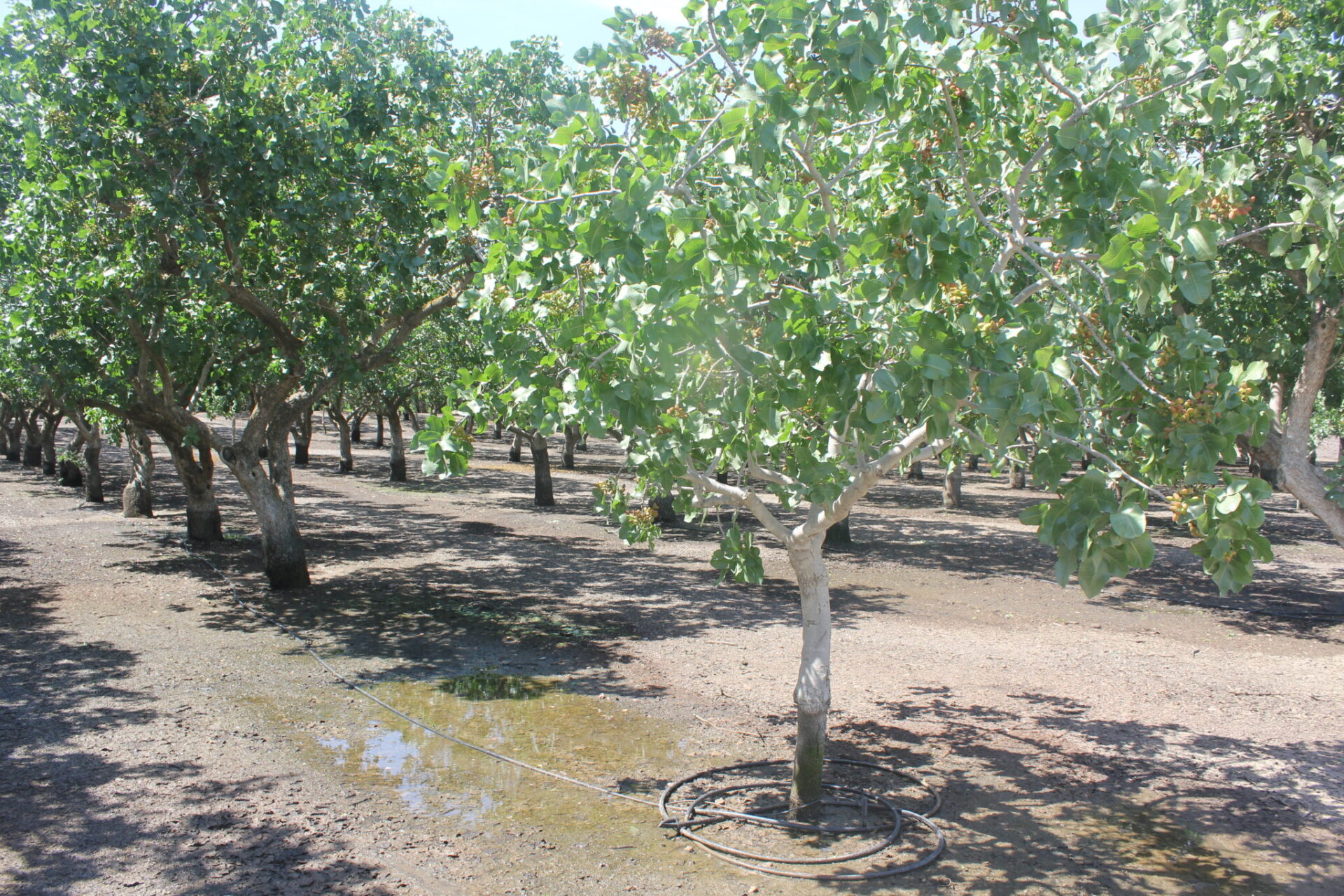
Optimizing yield is the goal with nitrogen applications in a pistachio orchard. Leaf sampling is one tool to help a grower know if they are on the right track. In his presentation for the 2020 UCCE Pistachio Short Course, Patrick Brown, UC Davis Department of Plant Sciences, said regulatory constraints on N use can be a factor in nutrient management, but it is possible to comply with reporting requirements and supply trees with needed N.
Matching N supply with demand will not only help with yield, but it will keep N from leaching below the root zone. Nitrogen budgeting is the primary method for determining N applications, while leaf sampling plays a secondary role.
Brown noted a challenge with using leaf sampling is to understand differences with critical values and adequate range. With N, the critical value is 1.8%, but adequate range is 2.2 to 2.5% – which is over-fertilization. Leaf sampling can also provide information as to the nutritional status of an orchard, but Brown said growers need to be aware of what the sample represents. Doing sampling right, he added, is a lot of work.
Timing for sampling is spring or late summer. In the spring, samples should be collected soon after full leaf expansion. Always choose a subterminal leaf on a non-fruiting branch. The protocol includes selecting leaves from 13 trees that are 30 yards apart, ten leaves per tree pooled. In non-uniform orchards, the sampling should be done in each soil or productivity zone separately. When selecting the ten leaves from the canopy, they should be from well-exposed branches located five to seven feet from the ground.
Spring samples can effectively predict summer tissue values, Brown said.
Choosing the right rate for N applications requires setting a realistic yield goal. Brown advised using experience of the potential for a particular orchard and then consider environmental conditions. Previous years’ yields, winter chill and spring flowering conditions are all critical to the N management decision. In-season adjustments can be made to account for greater- or lower-than-expected yields. An interactive N management spreadsheet can be found at ucanr.edu/p/41860.
Roots grow where the water is delivered, and 90% of them are in the top 18 inches of soil, Brown said. That is also where the N should be. Different soil types across an orchard can make that difficult if the irrigation system is set up to deliver the same amount of water to all trees. By managing fertigation, over and underfeeding can be avoided. N applied through irrigation should be applied toward the end of the irrigation. This can help it remain in the root zone and not become lost. N should also be applied in as many small doses as possible.











